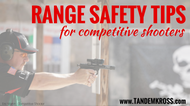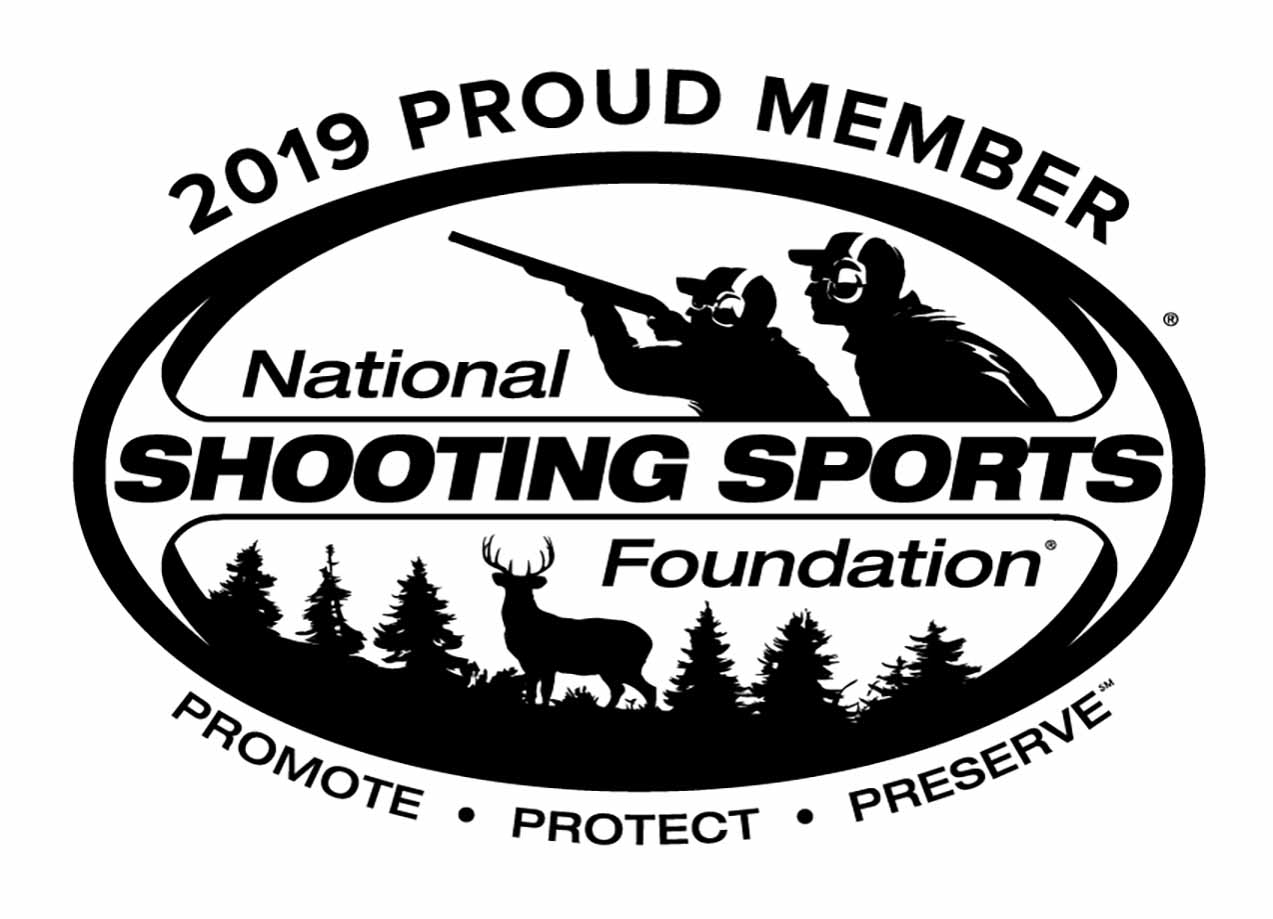Top Range Safety Tips for Competitive Shooters
Posted by Danielle Gagnon on 17th Apr 2017
Competitive shooters spend many hours training to improve their accuracy and speed. And while using a firearm safely is always a top priority during training sessions or a speed shooting match, many competitors don’t spend much time training to react if an emergency situation were to arise at a match or day at the range.
To improve your firearms safety knowledge, TANDEMKROSS spoke with Iowa State Trooper Jeremy Schaffer and got his best range safety tips for competitive shooters- whether you compete in Rimfire Challenge, Steel Challenge, USPSA or other speed shooting competitions.
Schaffer has years of experience in firearms safety training, working in law enforcement since 2005. He began serving as an Iowa State Trooper in 2007, and joined the Iowa State Patrol’s Tactical Team in 2009. He is a certified firearms and open sight rifle instructor and enjoys recreational shooting and hunting. He has taken multiple classes for tactical medicine in law enforcement, and also received medical training during his service in the U.S. Marine Corps.
Now, Trooper Schaffer is passing his best firearms safety tips on to you.
Q: Firearms competitions are very safe, but are there certain types of emergencies and injuries that firearms competitors should still be sure they’re prepared for?
A: Competitive shooters should be prepared to treat penetrating injuries such as a gunshot wound and injuries caused by shrapnel from shooting steel targets. Any time a person is using a firearm there is the potential for a negligent discharge or mechanical failure of the weapon which could cause injury. I would also stress the need for basic first aid skills like CPR. I feel that the ability to treat yourself or another is as important as your skill with your firearm. Even though these events are for fun and to enjoy our time at the range with friends we must be prepared to deal with emergencies when we encounter them.
Q: What first aid and safety tools should competitive shooters keep in their range bags to be ready to deal with a potential emergency situation?
.png)
A: The products and tools that I recommend every shooter keep in their range first aid kits would be at least two tourniquets. I prefer the CAT GEN 7 which is produced by North American Rescue. The tourniquets are used to stop massive bleeding on extremity wounds (such as on arms and legs).
I would also recommend packing combat gauze or regular gauze, which can be used to pack a wound (actually putting the gauze inside of the wound). Combat gauze comes with a hemostatic agent imbedded in the gauze, which helps the body's natural clotting process. Since wounds come in different sizes and gauze can be used up rapidly, I would suggest a minimum of two packages of gauze to be in your kit or accessible in your range bag.
Chest seals are also important. These are occlusive dressings that are placed over penetrating injuries to the chest. The intent is to keep any air from entering the chest cavity, which could eventually collapse a lung and create air pressure on the heart causing it to have difficulty beating. I use HyFin chest seals, they come in two packs and these can be purchased at North American Rescue.
Another key safety kit item are pressure bandages/dressings, which are used to cover a wound and to create pressure thereby helping to stop the flow of blood. These come in different sizes and I would recommend carrying at least two four inch bandages in your kit.
There are other miscellaneous items to consider as well, such as paramedic shears, which are used to remove clothing/equipment and medical tape which can assist in securing bandages.
Q: Are there pre-packaged range safety kits that you would recommend to competitive shooters?
A: There are many different companies that offer pre packaged kits for sale. The websites that I use are North American Rescue, Tactical Medical Solutions, Chinook Medical and Dark Angel Medical. These companies are all veteran owned and operated by folks with a strong knowledge in tactical medicine.
Q: Once a shooter has their range safety kit stocked and ready to go, where should they keep it during a match or training session?
A: I feel strongly that everyone should carry an individual first aid kit on their person during competition or anytime on the range. We know from our medical training that a person could die of blood loss in as little as three minutes. Even if we have a spectacular kit five minutes away this will be of little value to the injured person. We need to be able to immediately treat the injured person at the point of injury. We could do this with the injured person's first aid kit and if we needed additional medical supplies we could use those located in the larger range medical bag.
Q: Beyond packing a proper first aid kit, are there other things competitors should do to ensure they can successfully respond in an emergency situation?
A: I also strongly recommend that individual shooters seek out tactical medical training on their own. Having the right equipment is necessary when treating traumatic injuries but the knowledge of knowing what to do is an absolute necessity.
I cannot recommend strongly enough the need for medical training for anyone who uses a firearm for recreational use or who carries a firearm professionally. There are many different companies/individuals who are providing this type of training. I would caution folks to thoroughly research a company before taking the training. Things to look for are actual real world experience of the instructor, their professional background i.e., military or civilian medicine experience. I would also look at the kind of hands-on training the class provides. I strongly believe that a person needs to actually practice emergency response tasks to become proficient at it.
Q: What other firearms safety tips have you gathered from your time in law enforcement that could help competitive shooters stay safe during shooting sports matches and speed shooting training sessions?
A: When we conduct firearms training for my work as a law enforcement officer we always have a safety plan in place. We make sure our communication center knows the street address of the range we are shooting at. Second, we write the gps coordinates down so we have them if we need to bring a medical helicopter to the scene. Third, we also designate specific tasks for people to do in the case of an injury. This will prevent people from trying to all do the same thing instead of getting multiple tasks done quickly under stress. Fourth, we always have multiple first aid kits on the firing line and all of my coworkers are trained in tactical first aid as well.




